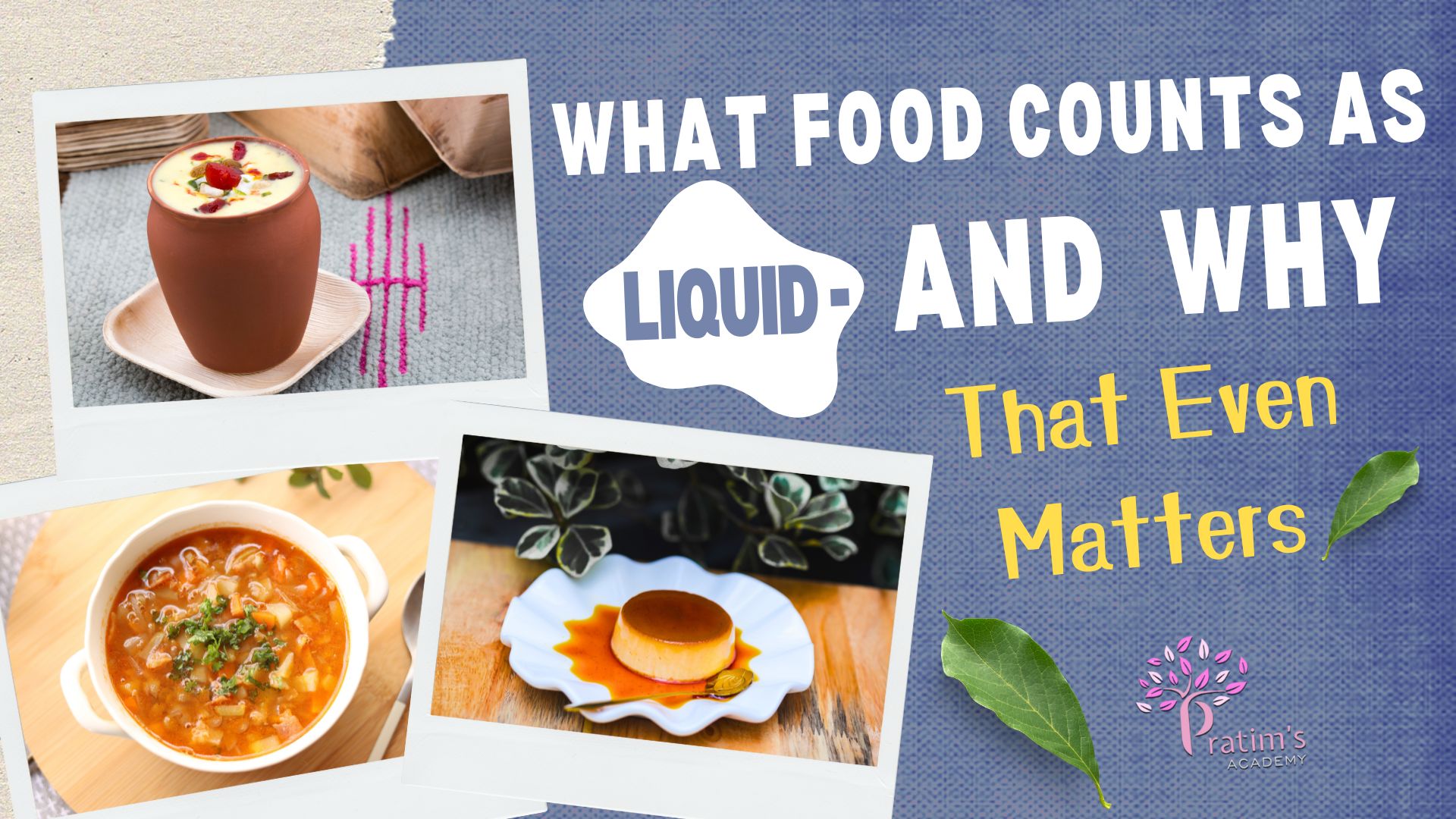
Imagine this: you’re recovering from surgery, about to board a flight, or going on one of those quirky juice cleanses you swore you’d never try. Suddenly, someone asks, “Does yogurt count as a liquid?” You pause mid-spoonful. That thick, creamy swirl – is it really a liquid? Let’s dive spoon-first into what food really counts as a liquid and why it’s not always as clear-cut as water.

Welcome to the wonderfully wobbly world of liquid foods – a place where soup, sorbet, and smoothies all mingle in ambiguous unity.
Let’s dive spoon-first into what really counts as a liquid and why it’s not always as clear-cut as water.
Science has a pretty strict definition. A liquid is a state of matter that:
Water? Clearly a liquid. Honey? Yes, but slow and sticky. Mashed potatoes? Now it gets interesting.
But in food science and practical life, things are a bit blurrier – literally and figuratively.
Here’s where context kicks in. Foods that “count as liquid” depend on why we’re asking:
Doctors categorize foods based on how the digestive system can handle them. Here’s how that breaks down:

Yogurt just got its liquid badge.
This is where it gets wild.
According to Transportation Security Administration, any food that “can be poured, squeezed, spread, or sprayed” counts as a liquid or gel. This includes:

So, your artisanal aioli? Liquid.
The apple you were planning to snack on? Solid.
Logic takes a backseat to squish-ability.
Chefs and mixologists often define liquid foods based on texture, consistency, and how they behave when mixed.

Fun fact: The Michelin-starred world has blurred the line with foams, gels, and reductions that behave like liquids but look like art.
So, why does it even matter what food counts as liquid?
Let’s take a quick trip to the edge of the fantastical with some real (but weird) liquid-ish foods:
In the right kitchen, even a steak might someday arrive as a savory foam.
For any food-related guidance, feel free to contact us.
Whether it’s a dietary rule, a security regulation, or a culinary decision, “liquid food” isn’t just about flowing freely. It’s about context. That spoonful of yogurt, that swirl of custard, that squeeze of guacamole – they all might be liquids in one world and solids in another.
So next time someone asks if Jell-O is a liquid, just smile and say: “It depends.”